Hands On with the Asus ROG Phone
Jun 22, 2018, 3:00 PM by Eric M. Zeman

Asus' dedicated gaming phone in a beast of a device. The ROG Phone has an overclocked processor, a fast display, and a bevy of accessories meant to help it out-game the competition. Did we mention the AeroActive Cooler snap-on cooling fan? We spent some time with the ROG Phone and these are our first impressions.
Asus announced the ROG Phone earlier this month. This device is meant specifically for gaming, and the company designed it from the ground up to excel at running hardcore games. It's a niche device, to be sure, but it is an interesting one. We decided to take a look at the phone and the ecosystem of accessories Asus has conjured up.
Asus warned us that the unit on hand was a prototype. It's nowhere near a factory build. It's possible some aspects of the hardware will change before the device reaches the market, and we can't necessarily comment on the quality of the build.
I dig the design, which is clearly inspired by gamers. There are lots of lines, textures, angles, and shades stretching here and there. It's a busy design. I like the color selection, which includes black, gray, and copper. It looks like it is straight out of a science fiction movie.
The ROG phone is a big phone. Thanks to the 6-inch screen, it has a tall and wide footprint. It's fairly thick, too. At least it is not very heavy, and that's good news. The ROG Phone has a glass front, a metal frame, and a polycarbonate rear plate. Asus did well to go with polycarbonate rather than glass or metal. This phone needs to be semi-rugged for the abuse it will surely take as it is used to interact with games.
The front face is mostly glass. There are two trapezoidal cutouts at the top and bottom to accommodate stereo speakers. The speakers are covered by copper-colored grilles. In order to deliver high-quality sound during games, the ROG features 24-bit high-resolution audio at 192 KHz. It supports DTS Headphone and 7.1 virtual surround sound, in addition to Bluetooth aptX HD.
Front
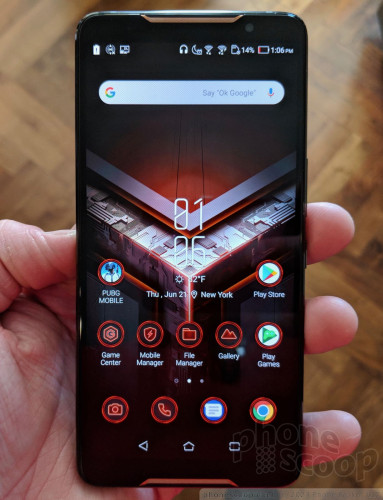
The 6-inch screen has a 2:1 aspect ratio with full HD+ resolution. It boasts a 10,000:1 contrast ratio for incredibly deep blacks and a 90 Hz refresh rate so games look their best. (By way of comparison, the Razer gaming phone's display has a 120 Hz refresh rate.) It includes a discrete imaging processing chip to support HDR playback. It looks good. The games and video content I sampled appeared rich and sharp. I'm sure it will be a good screen for gaming. The Android controls are of course built into the software rather than the hardware.
The two main buttons are on the right edge of the phone, and included a ridged screen lock key and a volume toggle. Both buttons have fine profiles and are easy to find and use. Travel and feedback is quite good. The left side houses a proprietary port that connects the ROG Phone to Asus' accessories. You'll find a headphone jack on top and a USB-C port on the bottom.
Right Side
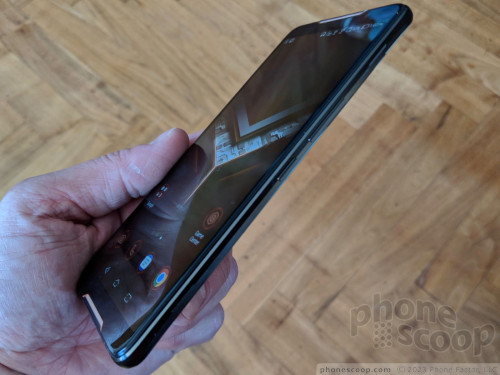
Left Side Port
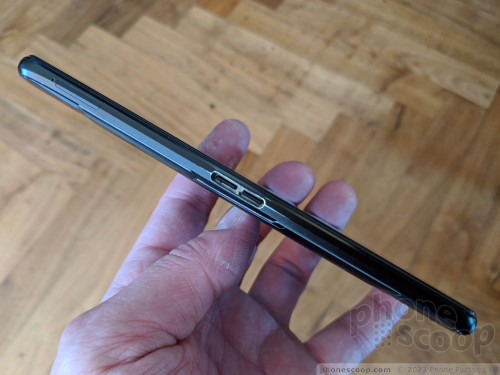
There's lots going on with the rear panel. To start, the two copper-colored grills stand out visually. These allow air to circulate through the chassis to help keep the processor cooler. The angular fingerprint reader, shaped as a parallelogram, is not centered. The sensor is recessed a bit, so that helps your finger locate it. The camera module has a similar shape and is pushed into the upper left corner.
Rear
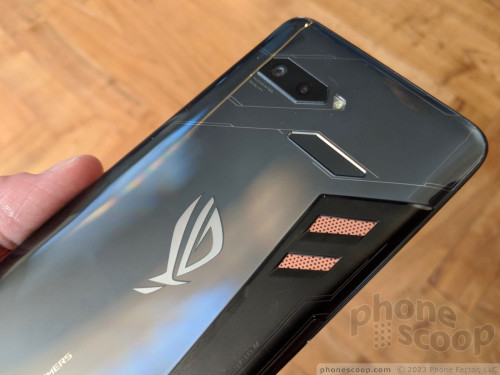
The Aura is the main feature of the rear panel. Taken from Asus' other gaming devices, the ROG Phone features a pulsing LED on the back that changes colors. It is meant to let people personalize their phone a bit. It doubles as a notification and alert light. The Aura can be fully controlled by software.
The phone runs Android 8 Oreo and will run a custom UI from Asus. Asus told us the UI isn't anywhere near to complete. It features a lot of blacks and bright colors. The phone ran smoothy while we looked at it.
The story does not end with the phone itself. First, there's the fan, called the AeroActive Cooler. The fan accessory is meant to help the phone run cooler. It attaches to the proprietary port on the right side and hooks onto the left. The fan runs air over the copper vents, drawing heat out of the phone. Cooling the processor allows it to run faster and more efficiently. The accessory includes an additional USB-C port and headphone jack for more comfortable gaming.
What's particularly neat is that the fan includes the Aura. It physically obstructs the Aura on the back of the phone itself, and replaces it. Neat! Asus reps on hand are pretty sure the fan will be included in the box with the phone.
Then there's the gaming case. This enormous clamshell-style accessory holds the ROG Phone on one side and includes a second display on the other. The idea is to double the screen real estate of the game. Asus says it will give gamers the APIs and other developer tools necessary to make this work. As it is for the moment, the second screen can mirror the first. Asus envisions that it will be able to split gameplay so the main action is on one screen while the screen-based controls are on the other. Or split the gameplay so a heads-up display or game map are available on one of the screens. The accessory will include its own 6000mAh power cell and can charge the phone during use. It includes its own buttons and headphone jack.
Rounding out our discussion, it's worth pointing out that Asus worked with Qualcomm on a custom version of the Snapdragon 845 that handles clock speeds up to 2.96 GHz. The processor also ups the minimum clock speed to keep games running smoothly. The 845 is paired with 8 GB of RAM, 128 GB of storage, and an Adreno 630 GPU.
Asus developed what it calls "air triggers" at the corners of the phone, which are pressure sensors in the frame to accommodate gaming actions. These were not active on the phone we saw.
How much will all this cost? Who knows. Asus hasn't set pricing for anything. The phone doesn't go on sale until the third quarter. Where will it be sold? Maybe the U.S., says Asus. We'll see.
Comments
No messages














































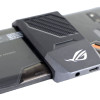 Review: Asus ROG Phone
Review: Asus ROG Phone
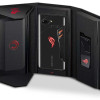 Asus' ROG Phone Now Available for Preorder
Asus' ROG Phone Now Available for Preorder
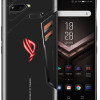 Asus Confirms Plans to Sell ROG Phone In the US for $899
Asus Confirms Plans to Sell ROG Phone In the US for $899
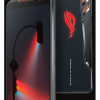 Asus Implies It Might Sell the ROG Phone in the US
Asus Implies It Might Sell the ROG Phone in the US
 Asus' ROG Smartphone Has Specially Tuned Snapdragon 845 for Blistering Game Performance
Asus' ROG Smartphone Has Specially Tuned Snapdragon 845 for Blistering Game Performance
 Asus ROG Phone
Asus ROG Phone


